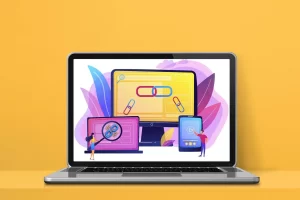Bounce rate is a term specifically used in the internet marketing industry for analysing web traffic. It represents the percentage of visitors entering your site but leaving without exploring or interacting on other pages within the same domain. The higher your website’s bounce rate, the lower the approximation of average online users spending time on a given page to look around.
What Does Your Website’s Bounce Rate Depend Upon?
The bounce rate for your website is vitally dependent upon five fundamental factors, including:
-
- The Landing Source
Distinct platforms taking visitors to your website play a key role in establishing whether they would stay or lose their interest soon. For example, online visitors that come to your website through LinkedIn, Google, or any other search engine are usually in an information-gathering mode, so they are less likely to leave without exploring. By contrast, users landing on your website via Facebook or other social media platforms are usually in a much different mindset, making them likelier to ‘bounce’ back.
-
- The Type of Traffic Coming Your Way
If the visitors landing on your website know about your company already, they may stay there for longer than users that aren’t familiar with you. Moreover, suppose you run an eCommerce store. In that case, the bounce rate would also depend upon whether your potential customers plan to buy from you or if they are simply looking into you for possible future purchases.
-
- The Structure and Designing
Websites that aren’t user-friendly or structured around old concepts tend to have a higher bounce rate than easy-to-navigate, modern sites. Plus, if there’s no visual appeal and proper design, it makes it likelier for the visitors to get bored and leave.
-
- The Loading Speed
It’s a well-known and understandable fact that websites with poor loading speed have lower conversion rates. Therefore, it isn’t difficult to figure out why they would also have a higher bounce rate. Research by Google has revealed that at least 53% of mobile users don’t stay on a website when it takes longer than three seconds to load.
-
- The Effort People Have to Make for Information-Hunting
Nobody likes to go through a chaotic mess to look for useful information. After all, there are plenty of other websites to gravitate towards. So, why should someone stick to a site that’s hard to understand? When you aren’t able to relay the information in a clean and structured manner, it leaves an undesired effect on your website’s overall bounce rate.
What’s the Best Bounce Rate to Strive for?
The digital marketing industry maintains that a bounce rate between 50%-60% or below is not entirely an undesirable outcome.
To put our estimate into further context, let us give you a summary for explaining why the average bounce rate for several websites may be perceived as high and how it’s not always a bad thing:
Many people reach out in their browsing history to revisit a specific page. This further increases the bounce rate for your website. By contrast a visit that spends a lot of time on your website contributes to a lower bounce rate but a lower bounce rate does not necessarily contribute to a higher conversion rate.
Lastly, most of us read through the website content for several long minutes before hitting the exit button. Sometimes, that’s what is needed for the visitors to familiarise themselves with your business and equally they may be multi tasking and distracted from taking action such as lodging an enquiry.
How to Improve Your Bounce Rate Using Simple Techniques?
Improving your bounce rate may seem difficult, but it isn’t necessarily tricky once you know what measures to take. Here are some considerations and actionable tasks to implement:
-
- Optimise Your Website’s Loading Speed
Before you blame the content on your site for low web traffic, it’s best to make sure the problem doesn’t arise before the visitor even has the chance to go through that. Low loading speed is a fundamental factor for a higher bounce rate. So, we recommend contacting professionals to optimise your website accordingly.
-
- Clear the Clutter
Furthermore, structuring your content such that it’s easy to read through is essential for keeping your visitors engaged and come back for more. If there’s a massive clutter on each page they visit, they would never return to explore more.
-
- Add Relevant Content
There should be a balance between what you want your users to hear and what they want to hear from you. If your content only revolves around your preferences and needs, the visitor may not be able to relate with you, opting for another website instead.
-
- Utilise Your Side Space Sparingly
Bombarding your website’s side space with ads can also be one of the prominent reasons why your visitors wouldn’t stay to explore through the different pages. So, while you utilise the side space, we suggest using it sparingly.
-
- Structurise Your Content with Internal Linking, But Smartly
Internal linking can be good for your overall SEO strategy, but packing your site with them can also backfire. When it does more damage than good in terms of enriching the user experience, it becomes a detrimental factor for your website’s bounce rate.
Now that you know what a good bounce rate is and how you can improve it, you can do your best to decipher your website’s problematic areas and start working on them.
Remember a high bounce rate may not be so bad if the call to action for example is a phone call from a prospective buyer to your business, who has immediately gained enough confidence in your brand and its offering and point of difference to reach out quickly.



